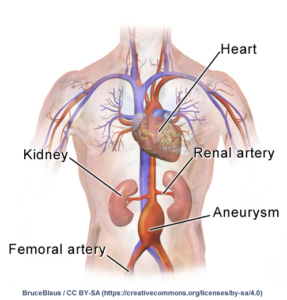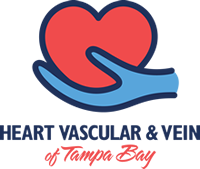About Abdominal Aortic Aneurysm
Overview of AAA
OVERVIEW
While an abdominal aortic aneurysm can be fatal if it ruptures, the good news is that there’s an effective treatment to prevent that from happening. By understanding the risk factors, symptoms, and treatment options, you can be prepared to take action quickly if needed.
DEFINITION
The aorta is the body’s major blood vessel. It runs from your heart, through your chest, and to your abdomen where it divides to supply blood to your legs. An abdominal aortic aneurysm (AAA) is a blood-filled bulge or ballooning in a part of your aorta that runs through your abdomen.
Over time, this bulge in your aorta can become weak, and the force of normal blood pressure can cause it to rupture. This can lead to severe pain and massive internal bleeding, or hemorrhage.
CAUSES
It is not known what exactly causes an abdominal aneurysm in some people. The ballooning may be caused by a weakness in the wall of the aorta where it has become inflamed. Some doctors believe that this inflammation may be due to clogged arteries (atherosclerosis), but it may also be related to heredity, injury, or other diseases.
SYMPTOMS
Most people with an abdominal aortic aneurysm do not have any symptoms. Often, the aneurysms grow slowly and go unnoticed. Many never reach the point of bursting; others enlarge quickly.
When an abdominal aneurysm expands, you or your doctor may notice a throbbing in the middle or lower part of your stomach, lower back pain, or tenderness in your chest. Most abdominal aneurysms are identified during routine medical exams.
 RISK FACTORS
RISK FACTORS
While the exact causes of abdominal aortic aneurysm are not clear, there are some risk factors associated with abdominal aortic aneurysm:
- Individuals over 50
- Smoking or a history of smoking
- Clogged arteries (atherosclerosis)
- High blood pressure (hypertension)
- Family history (genetic factors)
- High cholesterol (hypercholesteremia)
DIAGNOSIS
If your doctor sees signs of an abdominal aortic aneurysm, he or she may arrange for special tests to confirm the diagnosis. Usually, these will involve imaging of your abdomen using magnetic resonance imaging (MRI), computerized tomography (CT), and ultrasound imaging.
The images produced by these methods help your doctor “see” inside your aorta as well as other blood vessels and organs in your body to see if an aortic aneurysm is present.
Information on this site should not be used as a substitute for talking with your doctor. Always talk with your doctor about diagnosis and treatment information.
